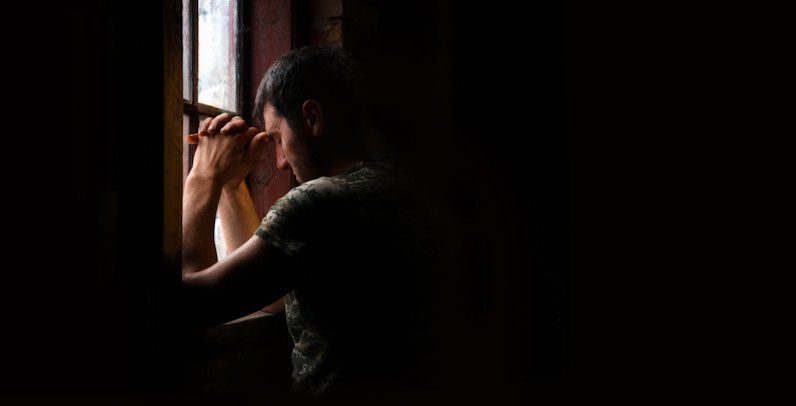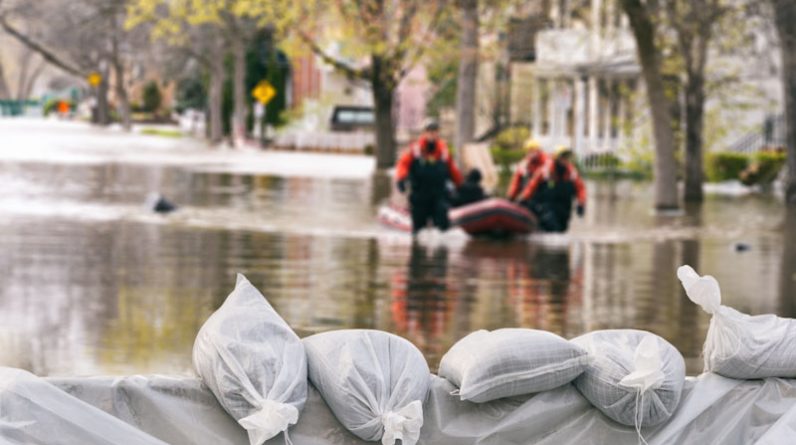Throughout the annals of history, mankind has derived immense pleasure from the art of storytelling, a cherished tradition that transcends generations. It is widely believed that both songs and narratives constitute the very threads interwoven to construct the intricate tapestry of interpersonal relationships.
With the advent of the digital era and the universal accessibility of the Internet, individuals worldwide gained the capability to spread their personal narratives. The proliferation of digital devices facilitating the global sharing of information has, indeed, empowered individuals with diverse and, at times, compelling stories to address the world. Amidst this vast array of narratives, there exist hidden gems that harbor valuable real-life lessons of particular interest to individuals with an awareness of preparedness and survivalism.
In today’s article, I will bring to light my favorite survival stories and the lessons we can learn from their protagonists. Without further ado, let us delve directly into the exploration of these compelling accounts.
1. Steven Callahan’s Ocean Trial
This is widely recognized as one of the most extraordinary survival stories in maritime history. In January 1982, Callahan set sail on his single-handed transatlantic journey aboard the Napoleon Solo, a sailboat he designed and built himself. Approximately six days into the journey, his vessel collided with an unidentified object, leading to its sinking.
Stranded alone in the vast Atlantic Ocean, Callahan faced the daunting challenge of survival in a small inflatable life raft. He had limited supplies, including a meager amount of food and a small survival kit. Despite the adversity, Callahan displayed remarkable ingenuity and resilience during his 76-day ordeal.
One of Callahan’s ingenious strategies involved converting the life raft’s canopy into a solar still to desalinate seawater for drinking. He also fashioned makeshift tools, such as a spear, to catch fish and birds for sustenance. Throughout the trial, he battled exposure to the elements, hunger, and physical exhaustion.
The turning point came on the 76th day when he was finally rescued by fishermen near the Caribbean islands. His survival not only highlighted the importance of practical survival skills but also emphasized the psychological aspects of enduring isolation and extreme conditions.
His survival story has become a case study in survival training and an inspiration for individuals interested in maritime adventures, emergency preparedness, and resilience in the face of adversity. The lessons from his experience continue to be shared and studied in various fields, contributing to our understanding of human survival capabilities in extreme environments.
Callahan’s ability to adapt to his circumstances is a central lesson. He ingeniously repurposed his limited resources, showcasing the importance of adaptability in the face of unforeseen challenges.
The story also underscores the significance of innovation and creative problem-solving in survival situations. Callahan improvised tools for providing sustenance and devised ways to endure the elements, demonstrating the power of resourcefulness.
Another aspect that it’s worth mentioning is his psychological resilience. Enduring 76 days alone at sea in a small life raft demanded considerable psychological resilience. Callahan’s mental fortitude and ability to cope with isolation offer insights into the importance of maintaining a positive mindset and emotional stability during prolonged challenges.
If you want to find out more about Callahan’s adventure, I recommend reading his book, “Adrift: 76 Days Lost at Sea.”
2. Juliane Koepcke’s Incredible Story
Juliane Koepcke’s survival story is a testament to survival and resilience in the face of adversity. She survived a plane crash in the Amazon rainforest, and her ordeal in the thick jungle still fascinates people to this day.
Juliane Koepcke was born on October 10, 1954, in Lima, Peru. Her parents, Maria Koepcke and Hans-Wilhelm Koepcke, were both well-known zoologists. She often traveled with her parents and assisted them in their study of the local fauna.
On December 24, 1971, Juliane and her mother boarded LANSA Flight 508, a Lockheed L-188A Electra aircraft, for a Christmas Eve flight from Lima to Pucallpa. The plane encountered severe thunderstorms, and it was struck by lightning, causing it to disintegrate in mid-air. Juliane was the only survivor of the crash.
After the plane disintegrated at an altitude of approximately 10,000 feet, Juliane free-fell, still strapped to her seat. Miraculously, she survived the fall with relatively minor injuries, including a broken collarbone, a gash on her arm, and swollen eyes due to exposure.
Despite her injuries, Juliane found herself alone in the dense Amazon rainforest. She navigated the challenging terrain, dealing with injuries, insects, and the elements. Her survival instincts kicked in as she searched for food and water while avoiding dangerous wildlife.
After ten days of enduring the harsh conditions of the jungle, Juliane was found by local lumbermen. They took her to a remote village where she received medical attention. The news of her survival and the incredible story of her ordeal quickly spread.
Juliane’s ability to remain composed during the chaotic moments of the plane crash was crucial to her survival. Staying calm in the face of extreme adversity is a valuable skill in any survival situation.
In the rainforest, Juliane had to rely on the resources available to her. She used her knowledge of the environment to find food and water, demonstrating the importance of resourcefulness and adaptability.
She focused on fulfilling her basic needs for survival – finding water, shelter, and sustenance. Prioritizing these fundamental requirements is a critical aspect of surviving in any challenging environment.
Juliane Koepcke documented her remarkable story in the memoir titled “When I Fell from the Sky,” co-written with Beate Rygiert. The book provides a detailed account of her survival and the subsequent challenges she faced.
3. The Uruguayan Rugby Team’s 1972 Plane Crash
This story, also known as the Andes flight disaster, is a compelling example of survival in the harsh conditions of the Andes Mountains.
On October 13, 1972, Uruguayan Air Force Flight 571 was en route from Montevideo, Uruguay, to Santiago, Chile. The plane, carrying 45 passengers, including members of the Uruguayan rugby team, as well as friends and family, crashed in the Andes Mountains.
The aircraft crashed into the remote Andes, leaving the survivors in a desolate, snow-covered landscape. Many passengers lost their lives in the initial impact, and the remaining survivors faced extreme challenges in the aftermath.
The crash occurred at a high altitude, exposing the survivors to freezing temperatures and challenging weather conditions. They had to contend with the severe cold of the Andean winter. Lacking proper winter clothing, the survivors had to improvise with the limited resources available to protect themselves from the cold.
The survivors had to be resourceful, using the wreckage and whatever items they had to create makeshift shelters and clothing. This underscores the importance of adaptability in survival situations.
The crash site was isolated, and the survivors were far from civilization. This isolation made it challenging for rescuers to locate them.
The survivors initially survived on whatever food they had from the plane’s wreckage, but it quickly ran out. This forced them to make difficult decisions about sustenance, leading to one of the most well-known aspects of their survival.
Faced with limited food supplies, the survivors made a difficult decision to resort to cannibalism to stay alive. This decision, while morally challenging, highlights the extreme measures people may take in life-or-death situations.
The survivors formed a close-knit community and relied on teamwork to support each other. Maintaining a sense of unity can be crucial for emotional well-being and shared survival efforts. They maintained hope and mental resilience despite the dire circumstances. This positive mindset likely contributed to their ability to endure the challenges they faced.
If you want to learn more about this survival story, you can check out the movie “Society of the Snow,” available on Netflix.
4. Aron Ralston’s Self-amputation Story
Aron Ralston’s self-amputation story is a harrowing tale of survival that gained widespread attention with the release of the “127 Hours” film. The incident occurred in April 2003 when Aron, an avid outdoorsman and experienced mountaineer, embarked on a solo canyoneering trip in the rugged terrain of Blue John Canyon. While exploring a narrow slot canyon, a boulder became dislodged and trapped his right forearm against the canyon wall, pinning him in an isolated location.
Ralston found himself alone and unable to free his trapped arm. He had limited supplies, including a small amount of water and food, and faced the daunting prospect of being stranded in the canyon without immediate rescue.
He made multiple attempts to dislodge the boulder and free his trapped arm but was unsuccessful. The realization that he was facing a life-threatening situation compelled him to consider drastic measures.
After being trapped for several days and with no hope of rescue, Ralston decided to self-amputate his trapped arm using a dull multi-tool. He ingeniously used the tool to rig a makeshift tourniquet and devised a pulley system to increase the force applied to the blade, allowing him to sever the bones and tissue in his forearm.
After amputating his own arm, Ralston rappelled down a 65-foot wall and hiked to find help. He encountered a family who provided assistance and summoned rescuers. He was then airlifted to a hospital, where he received medical attention for his injuries. The amputation was performed by medical professionals to ensure proper care.
Ralston’s story emphasizes the critical nature of decision-making in survival situations. He had to weigh the options and make a life-altering decision to increase his chances of survival. He also demonstrated remarkable resourcefulness by using the limited tools available to fashion a mechanism for self-amputation. This underscores the importance of adaptability and ingenuity in survival scenarios.
Hiswill to live and take decisive action in the face of extreme adversity played a crucial role in his survival. This determination is a powerful factor in overcoming seemingly insurmountable challenges.
I believe his survival story underscores the importance of risk mitigation and preparedness when engaging in outdoor activities. Having a comprehensive understanding of the environment, safety measures, and carrying adequate supplies can reduce the likelihood of life-threatening situations.
Concluding
These survival stories are a testament to the ingenuity and resilience of human nature in the face of adversity. In each narrative, common threads of resourcefulness, adaptability, and unwavering determination weave through the fabric of survival.
Such stories inspire contemplation on the limits of human endurance and the extraordinary measures taken when confronted with life-threatening situations. They underscore the profound importance of mental fortitude, quick decision-making, and creative problem-solving in navigating the unexpected challenges that life may present.









